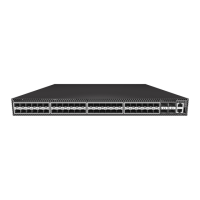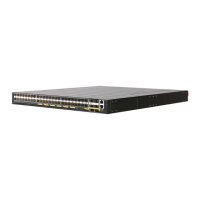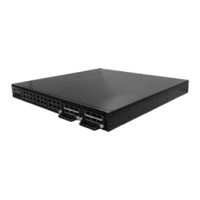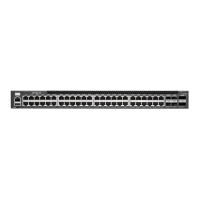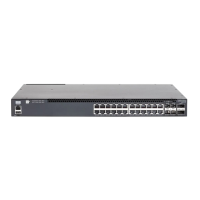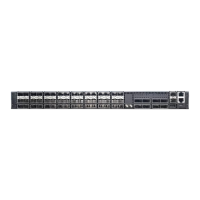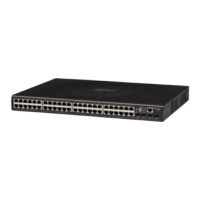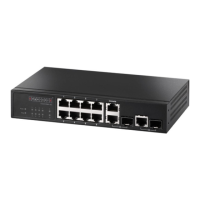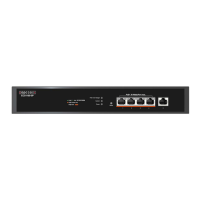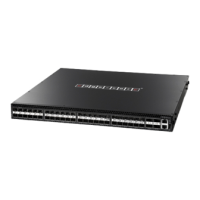Chapter 21
| Data Center Bridging Commands
DCB Exchange Commands
– 548 –
propagated information utilize this information and ignore their local
configuration. The first auto-upstream port to successfully accept a compatible
configuration becomes the configuration source.
Peer configurations received on auto-upstream ports other than the
configuration source are accepted if compatible with the configuration source,
and the DCBX client is set to operationally active on the auto-upstream port. If
the configuration is not compatible with the configuration source, a message is
logged indicating an incompatible configuration, an error counter
incremented, and the DCBX client operationally disabled on the port.
◆ On a port set to configuration-source mode, automatic election of a new
configuration source port is not allowed. Events that would cause selection of a
new configuration source are ignored. The configuration received over the
configuration source port is maintained until it is cleared by setting the port to
the manual mode. Only the configuration source is allowed to propagate its
configuration to other ports internally.
If no port is set to configuration-source mode, then the first auto-upstream port
to accept a compatible configuration becomes the configuration source.
◆ On a port set to manual mode, only locally configured settings are used to
construct DCBX TLVs. On these ports, the operational mode, traffic classes, and
bandwidth information must be specified by the operator. These ports
advertise their configuration to their peer if DCBX is enabled on that port. Any
incompatible peer configurations received on these ports are logged and an
error counter incremented.
Example
The following example sets DCBX mode to auto-upstream on port 5:
Console(config)#interface ethernet 1/5
Console(config-if)#dcbx mode auto-up
Console(config-if)#
show dcbx This command shows the DCBX configuration settings and status of the LLDP TLV
willing bits.
Syntax
show dcbx [interface]
interface
ethernet unit/port
unit - Unit identifier. (Range: 1)
port - Port number. (Range: 1-32/54)
port-channel channel-id (Range: 1-16/27)

